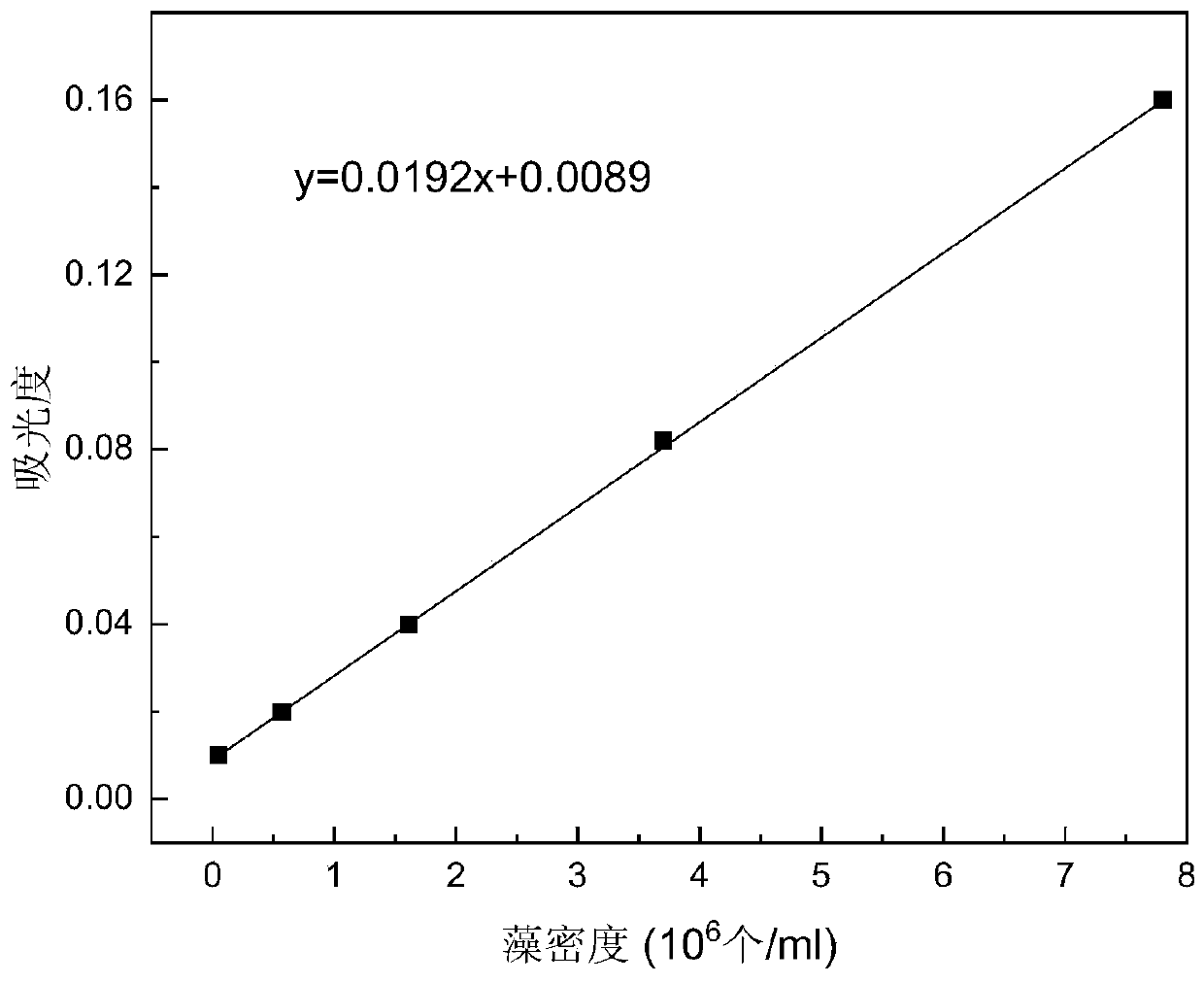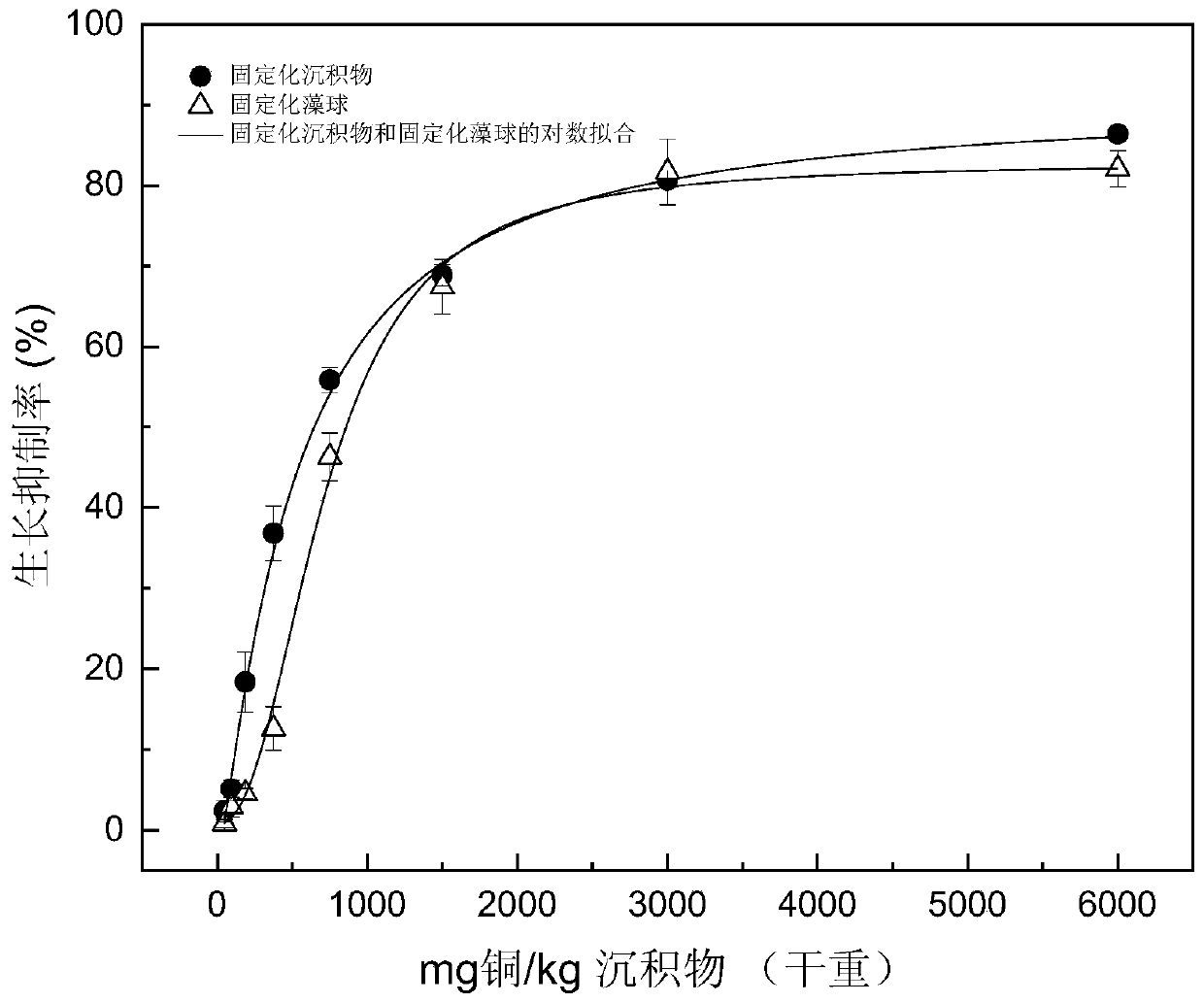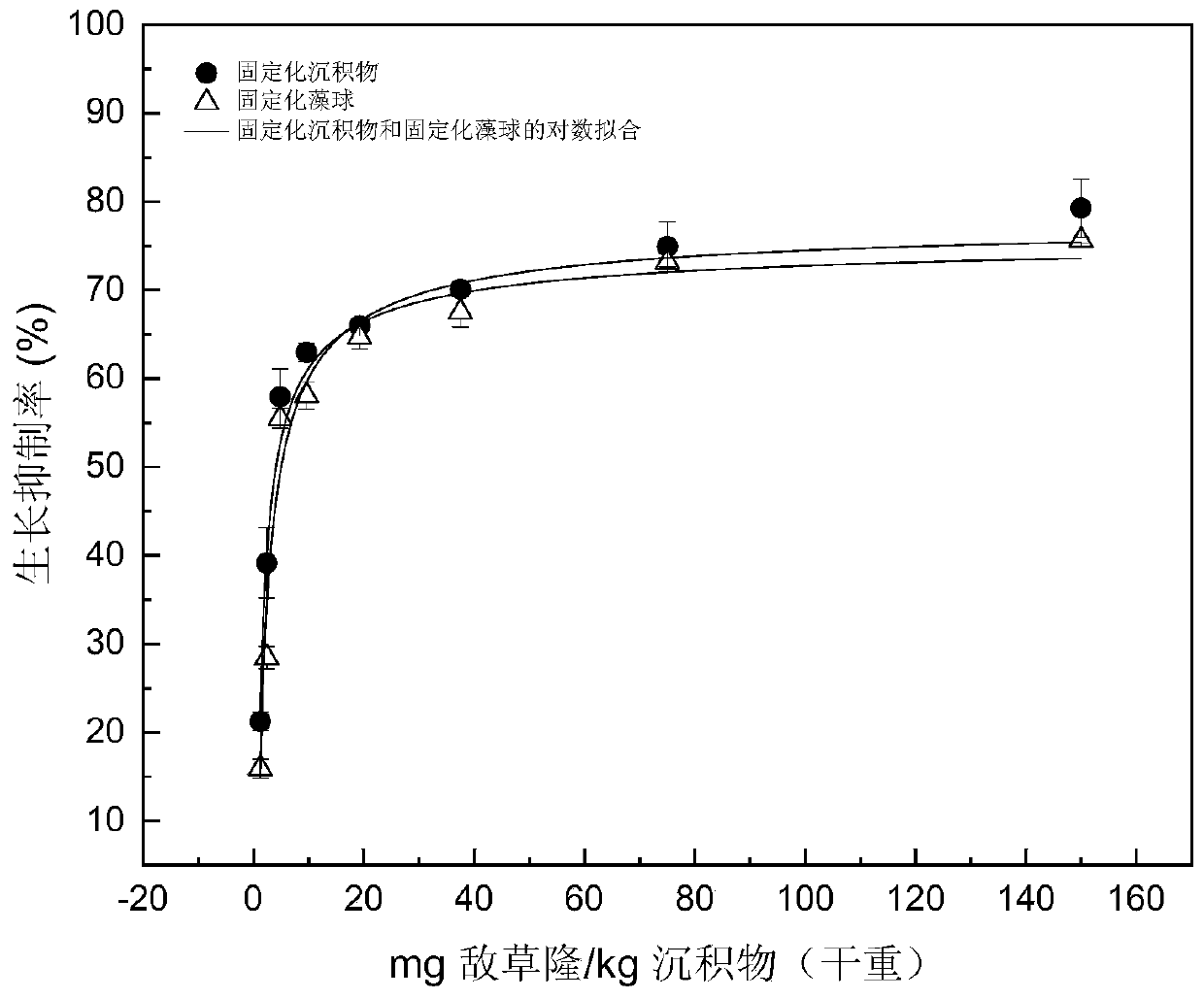Immobilized sediment and preparation method and application thereof
A sediment-to-volume ratio technology, applied in the preparation of test samples, biological testing, material inspection products, etc., can solve problems such as toxicity test of very few algae total sediments, and achieve excellent mass transfer performance, good holding capacity, The effect of good diffusivity
- Summary
- Abstract
- Description
- Claims
- Application Information
AI Technical Summary
Problems solved by technology
Method used
Image
Examples
Embodiment 1
[0030] A method for preparing an immobilized deposit, the method comprising the steps of:
[0031] 1) Take the sediment (sediment or soil) and use a freeze dryer to freeze-dry. The freeze-drying conditions are: the temperature of the freeze-trap is -50°C, the pumping speed of the vacuum pump is 125L / min, and then it is ground with a quartz grinding plate and passed through a 60-mesh sieve. obtaining sediment samples;
[0032] 2) Mix the sediment sample with sodium alginate solution (the mass volume ratio of sodium alginate and solvent water is 5g:100mL) according to the mass volume ratio of 1g:5ml, and stir for 2min at a stirring frequency of 10r / s. Mix evenly to make a spare mixture;
[0033] 3) Maintain a speed of 2ml / s in the vertical direction, squeeze the spare mixed solution into the calcium chloride solution (the mass volume ratio of calcium chloride to solvent water is 5g:100mL) at a constant speed, and alternately The combined time is 25min to form fixed deposits; ...
Embodiment 2
[0041] A method for preparing an immobilized deposit, the method comprising the following steps:
[0042] 1) Take the sediment (sediment or soil of the river course) and freeze-dry it with a freeze dryer. The freeze-drying conditions are: the temperature of the freeze trap is -65°C, the pumping speed of the vacuum pump is 100L / min, and then it is ground with a quartz grinding plate and passed through 100 mesh. Sieve to obtain sediment samples;
[0043] 2) Mix the sediment sample with sodium alginate solution (the mass volume ratio of sodium alginate and solvent water is 2g:100mL) according to the mass volume ratio of 1g:10ml, and stir for 5min at the stirring frequency of 2r / s, Mix evenly to make a spare mixture;
[0044] 3) Maintain a speed of 0.2ml / s in the vertical direction, squeeze the spare mixed solution into the calcium chloride solution (the mass volume ratio of calcium chloride to solvent water is 2g:100mL) at a constant speed, and at a temperature of 23°C, The cross...
Embodiment 3
[0052] A method for preparing an immobilized deposit, the method comprising the steps of:
[0053] 1) Take the sediment (sediment or soil of the river course) and freeze-dry it with a freeze dryer. The freeze-drying conditions are: the temperature of the freeze trap is -60°C, the pumping speed of the vacuum pump is 110L / min, and then it is ground with a quartz grinding plate and passed through 80 mesh. Sieve to obtain sediment samples;
[0054] 2) Mix the sediment sample with sodium alginate solution (the mass volume ratio of sodium alginate and solvent water is 3g:100mL) according to the mass volume ratio of 1g:7ml, and stir for 3min at a stirring frequency of 5r / s, Mix evenly to make a spare mixture;
[0055] 3) Maintain a speed of 1ml / s in the vertical direction, squeeze the spare mixed solution into the calcium chloride solution (the mass volume ratio of calcium chloride to solvent water is 3g:100mL) at a constant speed, and alternately The combined time is 30min to form...
PUM
| Property | Measurement | Unit |
|---|---|---|
| density | aaaaa | aaaaa |
| pore size | aaaaa | aaaaa |
| surface area | aaaaa | aaaaa |
Abstract
Description
Claims
Application Information
 Login to View More
Login to View More - R&D
- Intellectual Property
- Life Sciences
- Materials
- Tech Scout
- Unparalleled Data Quality
- Higher Quality Content
- 60% Fewer Hallucinations
Browse by: Latest US Patents, China's latest patents, Technical Efficacy Thesaurus, Application Domain, Technology Topic, Popular Technical Reports.
© 2025 PatSnap. All rights reserved.Legal|Privacy policy|Modern Slavery Act Transparency Statement|Sitemap|About US| Contact US: help@patsnap.com



